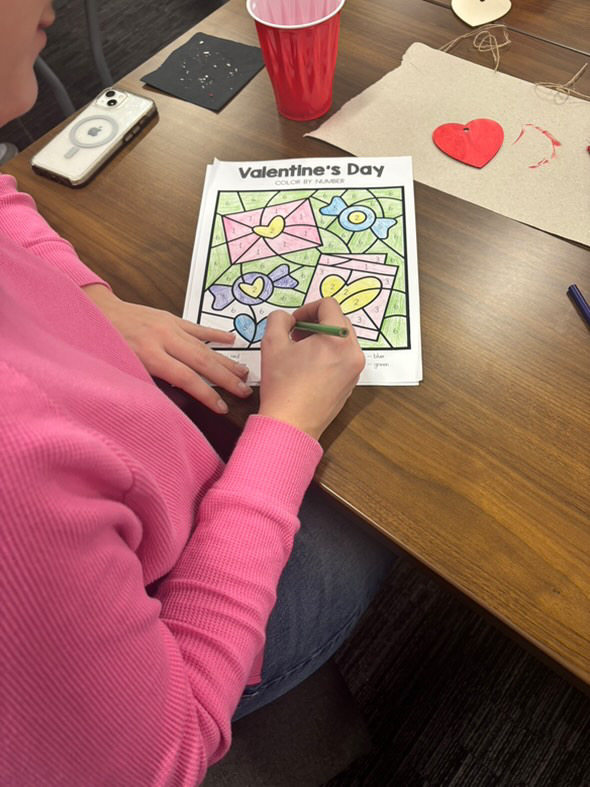Reboots are nothing new when it comes to video games these days. It seems like it’s a constant occurrence that studios are remaking a beloved franchise for a modern day take.
“Tomb Raider” is one of the latest game series to take advantage of this trend; after playing the older games of the series, it’s easy to see why.
Making a new installment of the series with its pre-existing choppy controls and gameplay probably wouldn’t have been very good by today’s standards, so the developer, Crystal Dynamics, took to making a complete revamp with their 2013 reboot of “Tomb Raider.”
The main plot of “Tomb Raider” follows the protagonist Lara Croft in what essentially becomes an origin story of her character. The story begins with a voyage full of researchers in an attempt to find the legendary island of Yamatai.
While sailing to their destination, the crew is overtaken by a horrific storm which destroys the ship and leaves Lara and her companions stranded on an island, which turns out to be Yamatai. Not long after the voyagers wake up on the island, they are attacked and captured by the native residents.
Lara soon escapes, however, and this starts the game’s main purpose of rescuing the other members of the research expedition. While starting off as a relatively simple rescue situation, the story eventually throws in themes of betrayal and adds supernatural elements to the island’s natives and the god they worship.
In terms of gameplay, “Tomb Raider” plays as a third-person shooter that includes heavy sections of platforming. The main elements of the gameplay are extremely similar to the “Uncharted” series, almost exactly the same in terms of how combat feels and plays. The platforming also takes a page from “Uncharted” by being extremely linear when it comes to progression.
Unlike “Uncharted” though, “Tomb Raider” is much more forgiving when it comes to the platforming. While “Uncharted” punishes players for being even an iota of a degree off from where the game wants the player to jump with death, “Tomb Raider” is more forgiving by allowing more control over directions of how to navigate areas of the game.
Other additions to the game include the upgrade and leveling systems. The leveling system is implemented by giving experience points to the player for performing actions, such as killing enemies and animals, and through normal story progression.
These experience points eventually culminate in an added level, which gives one skill point per level that can be used to give Lara an additional perk that will either provide a new ability or increase health, damage and the like.
The upgrade system is pretty simplistic. When enough salvage parts from across the island are found, the player can upgrade their weapons to be more accurate, do more damage, have a faster reload speed and other perks. In terms of positive aspects of the game, this is where they end.
“Tomb Raider” has quite the list of problems that prevent it from being the great game it could have been. As mentioned earlier, “Tomb Raider’s” combat borrows heavily from that of the “Uncharted” series, and because of that, the game has the same type of issues. The gunplay end of combat is rather shallow, with the sub-par cover system not making matters much better.
During combat, it’s extremely common to hide behind a wall and pop out for a couple seconds to shoot at enemies, only to have to duck behind cover almost immediately to wait for health to regenerate before repeating the process until the multiple waves of homogenized enemies are finally wiped out.
The melee combat is also extremely underpowered. Every enemy carries a weapon of some sort, meaning that when one tries to kill an enemy with melee attacks, every other enemy will be firing at the player at that time.
The puzzles that are used in the various tombs and temples throughout the game are also extremely easy, requiring almost no thought to their solution. Making this even easier is the Survival Instinct mechanic.
With the press of a button, Survival Instinct shows all of the parts to how a puzzle works and where they are, while leaving little to the imagination in how to solve the puzzle. What Survival Instinct does well, however, is light up pathways that the player has to traverse in order to progress.
This is extremely helpful due the game’s poor level design. The environments, when not a completely linear hallway, leave an open area to traverse that has no real sense of direction of where to go or what objectives are. The game also has a huge disconnect between what the player experiences through gameplay and cutscenes.
For example, in a cutscene, Lara may be driven to tears for killing people in order to survive; immediately after the cutscene, Lara will be equipped with a shotgun with a few enemies lined up in front of her to kill. This disconnect makes the game’s narrative rather shaky.
While certainly better than its predecessors, “Tomb Raider” ultimately didn’t live up to the expectations that were given it.
From the gameplay to the narrative, “Tomb Raider” was a rather lackluster experience. While the game isn’t awful, it certainly isn’t anything great or groundbreaking.






